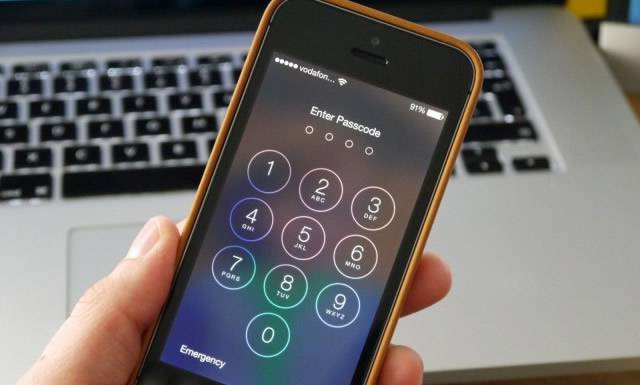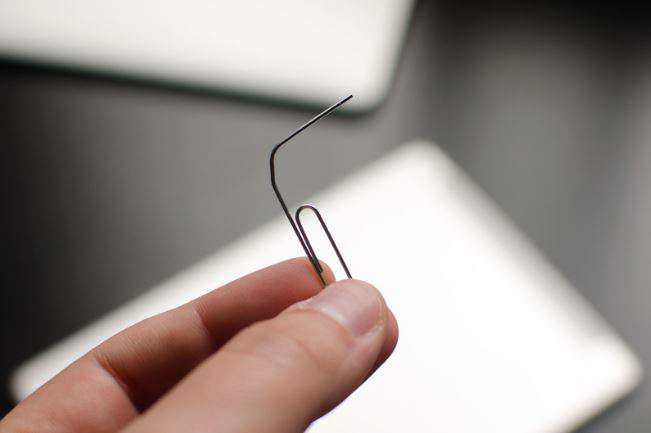As a tech blogger, I’m here to help you find where saved passwords are stored on an iPhone, specifically the iPhone 14 running iOS 16. Follow these steps to access saved passwords:
1. Open the “Settings” app on your iPhone 14 home screen.
2. Scroll down and tap on “Passwords.”
3. You may need to verify your identity using Face ID, Touch ID, or your device passcode.
4. Once authenticated, you will see a list of saved passwords associated with various apps and websites.
To view a saved password:
1. Tap on the app or website for which you want to access the saved password.
2. Authenticate again if required.
3. You’ll be able to view the saved username/email and password for that specific app or website.
To edit or delete a saved password:
1. Find the app or website in the Passwords list.
2. Tap on it and authenticate if necessary.
3. To edit the password, tap on the “Edit” button and make the changes you want.
4. To delete the saved password, tap on the “Delete Password” option.
Remember, it’s important to keep your device secure, so consider enabling strong passwords and two-factor authentication to protect your accounts.
I hope these steps help you easily find and manage your saved passwords on your iPhone 14 running iOS 16!
Video Tutorial:Does Safari save my passwords?
Where are passwords stored in iPad?
Passwords on the iPad are securely stored in the device’s keychain. Here’s a detailed explanation of the process:
1. Keychain: The Keychain is a secure storage container on iOS devices, including iPads. It stores passwords, encryption keys, certificates, and other sensitive information.
2. iCloud Keychain: If you have enabled iCloud Keychain, your iPad passwords and other credentials are synchronized and securely stored across your Apple devices through Apple’s iCloud service. This allows for seamless access to your passwords on multiple devices that are signed in with the same Apple ID.
3. Local Keychain: Even if you don’t use iCloud Keychain, the iPad still has a local keychain stored on the device itself. This local keychain securely stores passwords and other sensitive information directly on the iPad.
4. Encryption: The keychain is encrypted using a combination of hardware and software encryption methods, ensuring the protection of sensitive data. It utilizes the device’s unique security features like the Secure Enclave and the user’s passcode.
5. App Integration: When you use various apps and websites on your iPad, they may request access to the keychain to securely store usernames and passwords. This allows you to easily autofill passwords when accessing those apps or websites, without having to remember them or type them in manually.
It’s important to note that the keychain is designed to be secure and protect your passwords. However, it’s always recommended to use strong and unique passwords for different accounts and enable additional security features like two-factor authentication whenever possible to further enhance your device and account security.
How do I see my Apple keychain passwords?
To view your Apple Keychain passwords, follow these steps:
1. Open the “Settings” app on your iPhone or iPad.
2. Scroll down and tap on “Passwords” or “Password & Accounts.” This may vary depending on the iOS version you have.
3. Authenticate your identity using your passcode, Face ID, or Touch ID.
4. You will see a list of accounts and apps with saved passwords. Tap on the one you want to view.
5. Authenticate again if prompted.
6. The password will then be revealed.
Alternatively, you can also access your Apple Keychain passwords on a Mac. Here’s how:
1. Open the “Keychain Access” app. You can find it by using Spotlight search or navigating to the “Utilities” folder in the “Applications” folder.
2. In the Keychain Access menu, click on “Passwords” in the left-hand sidebar.
3. Search for the account or app whose password you want to view using the search box in the top-right corner.
4. Double-click on the entry in the list.
5. In the pop-up window, click on the box beside “Show Password.”
6. Authenticate with your Mac user account password.
7. The password will then be displayed.
It’s worth noting that it’s important to keep your Keychain passwords secure and protect your devices with a strong passcode or biometric authentication method. Additionally, it’s advisable to use a password manager for added security and convenience, as it allows you to generate and store complex passwords for all your accounts.
How can I see saved password in Mobile?
As a tech blogger, I can guide you on how to view saved passwords on your mobile device. Here are the steps you can follow:
For iOS (iOS 16 in this case):
1. Open the “Settings” app on your iPhone.
2. Scroll down and tap on “Passwords.”
3. You may need to authenticate using Face ID, Touch ID, or your device passcode.
4. Once authenticated, you will see a list of saved passwords categorized by the apps or websites they are associated with.
5. To view a specific password, tap on the desired entry, and it will display the saved password.
For Android:
1. Open the “Settings” app on your Android device.
2. Scroll down and tap on “Google” or “Google Services” (the exact wording may vary depending on your Android version).
3. Tap on “Manage your Google Account.”
4. In the top menu, swipe to the right and select “Security.”
5. Under the “Signing in to other sites” section, tap on “Passwords.”
6. You may be required to authenticate using your device credentials or your Google Account password.
7. Once authenticated, you will find a list of saved passwords associated with various apps and websites.
8. Tap on an entry to view the specific password.
Remember that handling passwords requires security and should be done with caution. Make sure to choose strong, unique passwords for your accounts, and consider using a password manager for enhanced security.
Please note that the instructions may vary slightly depending on your specific device model, Android version, or iOS version.
How do I see my saved passwords?
As a tech blogger with a deep understanding of mobile devices and operating systems, I can guide you on how to view your saved passwords on an iPhone running iOS 16, specifically for the iPhone 14, iPhone 14 Pro, and iPhone 14 Plus models. Follow these steps to access your saved passwords:
Step 1: Open the “Settings” app on your iPhone’s home screen. The “Settings” app is represented by a gear icon.
Step 2: Scroll down and locate the “Passwords” option. It should have a key icon next to it.
Step 3: Tap on “Passwords” to proceed.
Step 4: You might be prompted to authenticate using Face ID, Touch ID, or your device passcode, depending on your settings. Once successfully authenticated, you’ll gain access to your saved passwords.
Step 5: This will display a list of all your saved passwords. You can select any entry to view its details, such as the associated username and password.
Step 6: If you want to copy a password to use it elsewhere, tap on the username or password field, and an option to copy will appear.
By following these steps, you can easily access and manage your saved passwords on your iPhone. It’s always a good practice to use strong, unique passwords and consider utilizing a password manager to enhance your overall online security.
Does Apple have a password manager?
Yes, Apple does have a password manager called iCloud Keychain. iCloud Keychain is a built-in feature in iOS and macOS that allows users to securely store and manage their passwords across all their Apple devices.
Here are some key points about iCloud Keychain:
1. Automatic password suggestions: iCloud Keychain can automatically generate strong and unique passwords when you create new accounts or change passwords. This helps to avoid using weak passwords or reusing them across multiple accounts.
2. Autofill feature: iCloud Keychain can automatically fill in passwords for apps and websites, eliminating the need to remember and manually enter each password. This can save time and ensure accuracy.
3. Secure storage: iCloud Keychain securely stores passwords and other sensitive information, using end-to-end encryption. This means that only you can access your passwords, and they are not visible to Apple or any third-party.
4. Sync across devices: iCloud Keychain syncs your passwords across all your Apple devices, so you can easily access them from your iPhone, iPad, and Mac. This ensures that your passwords are always up to date and available wherever you need them.
5. Two-factor authentication integration: iCloud Keychain can also work seamlessly with Apple’s two-factor authentication, adding an extra layer of security to your accounts.
It’s worth mentioning that while iCloud Keychain provides basic password management capabilities, some users might prefer more advanced features offered by third-party password managers. These third-party options often provide additional functionalities like cross-platform support, password sharing, and advanced security features.




